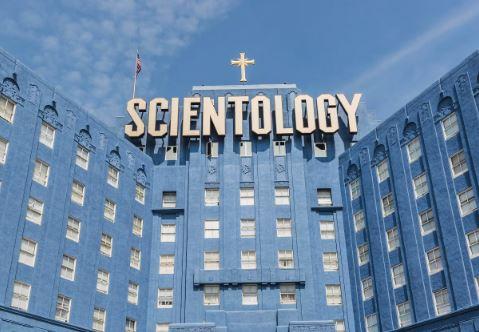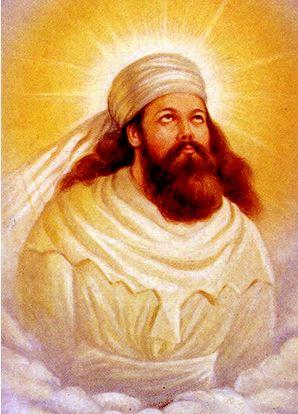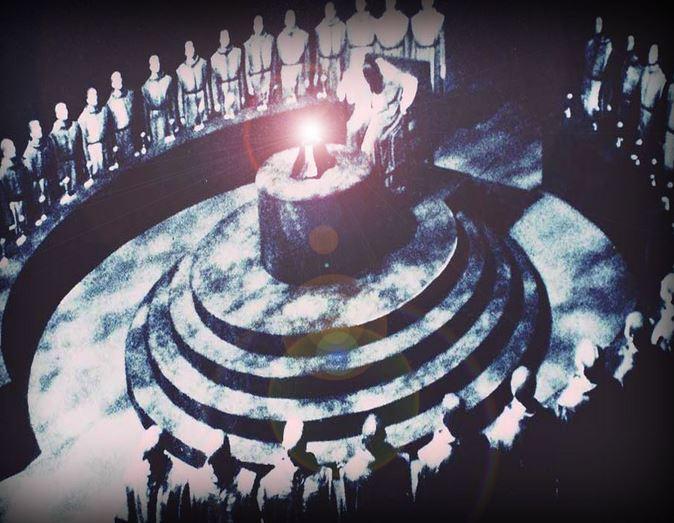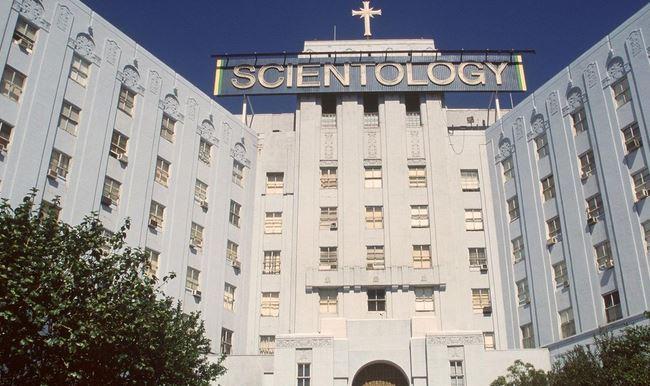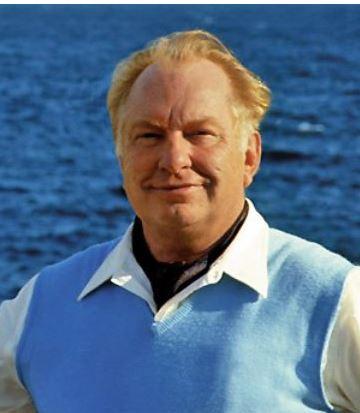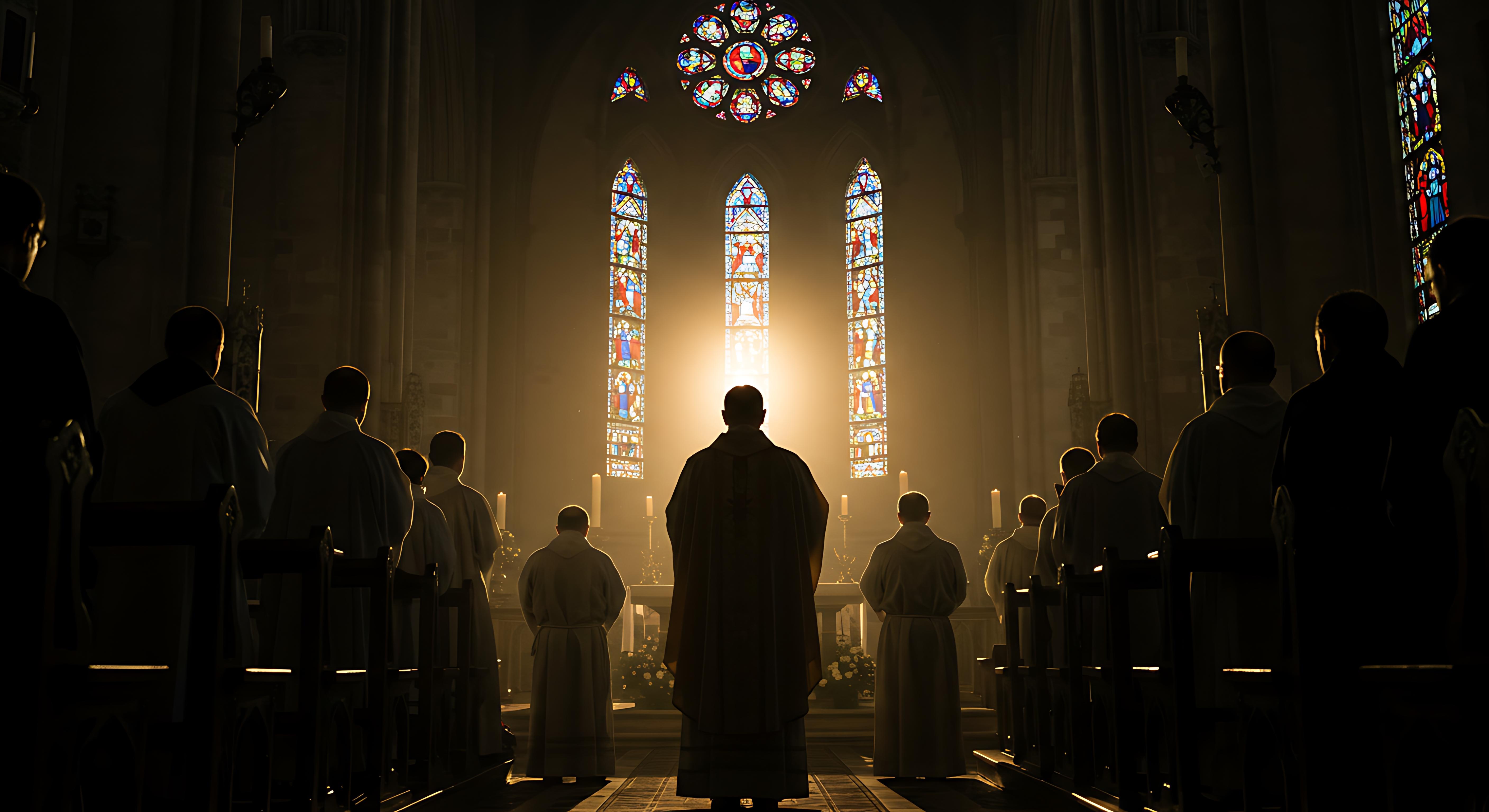Scientology: Exploring the Controversial Religion
The Church of Scientology has been a subject of fascination and controversy for decades. Founded by L. Ron Hubbard, this religious movement has garnered significant attention worldwide.

At its core, Scientology is a complex and multifaceted faith that encompasses a wide range of beliefs and practices. As we delve into the history and principles of this religion, we will explore the controversies surrounding it.
This article aims to provide a comprehensive overview of Scientology, examining its development, key tenets, and the criticisms it has faced.
Key Takeaways
- An overview of the Church of Scientology's history and founding principles
- Examination of Scientology's core beliefs and practices
- Discussion of the controversies and criticisms surrounding the church
- Analysis of the impact of Scientology on its members and the wider community
- Insights into the ongoing debates and discussions about Scientology
The Origins and History of Scientology
In the midst of the post-war era, a new philosophy emerged, shaping what would become Scientology. The world was changing rapidly, and people's quest for self-improvement and understanding of the human mind was gaining momentum.
The Birth of Dianetics in 1950
L. Ron Hubbard's book "Dianetics: The Modern Science of Mental Health" was published in 1950, marking the beginning of Dianetics. This self-help book introduced techniques aimed at improving mental health and was an instant success.
Dianetics focused on the concept of the "reactive mind," which Hubbard believed was the source of mental health issues. The book provided a methodology for addressing these issues through a process called "auditing."
Transition from Self-Help to Religious Movement
As Dianetics gained popularity, Hubbard began to expand his teachings, gradually transforming them into a more comprehensive philosophy that eventually became Scientology. This transition involved the introduction of spiritual concepts, including the idea of past lives and the existence of a spiritual being, known as a "Thetan."
"Man is basically good, but he has a reactive mind that causes him to act irrationally." - L. Ron Hubbard
The shift from a self-help movement to a religious organization was formalized in the late 1950s. Hubbard's teachings were organized into a structured doctrine, and the first Church of Scientology was established.
| Year | Event | Significance |
|---|---|---|
| 1950 | Publication of "Dianetics" | Marked the beginning of Dianetics and its self-help techniques. |
| Late 1950s | Transition to Scientology | Hubbard's teachings evolved into a religious movement. |
| Early 1960s | Establishment of the Church of Scientology | The first official Scientology church was established. |
L. Ron Hubbard: The Founder of Scientology
The life of L. Ron Hubbard, founder of Scientology, is a complex tapestry of adventure, literature, and spirituality. His journey from a young man with a passion for writing to the leader of a global religious movement is both fascinating and multifaceted.
Early Life and Career
L. Ron Hubbard was born on March 13, 1911, in Tilden, Nebraska. His early life was marked by a keen interest in science fiction and adventure stories. Hubbard's father was a naval officer, and his travels during childhood exposed him to various cultures, potentially influencing his later work. Hubbard himself became an avid explorer and writer, publishing his first fiction pieces in the 1930s.
From Science Fiction Writer to Religious Leader
Hubbard's transition from science fiction to self-help and eventually to religious leadership began with the publication of "Dianetics: The Modern Science of Mental Health" in 1950. This book became a bestseller and laid the groundwork for Scientology. Hubbard's charismatic leadership and the controversial yet intriguing principles of Dianetics attracted a dedicated following, gradually evolving into a full-fledged religious movement.
Hubbard's Legacy Within the Church
After Hubbard's death in 1986, his legacy continued to shape the Church of Scientology. His teachings remain central to the religion's practices and beliefs. The Church continues to promote Hubbard's works, including his science fiction and non-fiction writings, as well as his Dianetics and Scientology materials. Hubbard's influence on modern spirituality and self-help movements is undeniable, making him a pivotal figure in contemporary religious history.
- Key Contributions: Development of Dianetics and Scientology
- Influence: Shaped modern self-help and spiritual movements
- Legacy: Continues to be revered within the Church of Scientology
Core Beliefs and Teachings of Scientology
At the heart of Scientology lies a set of core beliefs that guide its followers toward spiritual enlightenment and self-improvement. These beliefs are rooted in the teachings of L. Ron Hubbard and are designed to help Scientologists understand themselves and the world around them.
The Concept of Thetan and Past Lives
A fundamental belief in Scientology is the concept of the Thetan, which refers to the spiritual being or soul. According to Scientology teachings, the Thetan is immortal and has lived countless past lives, accumulating experiences that influence current life. This belief underscores the practice of auditing, where Scientologists recall and confront past traumas to achieve spiritual freedom.
The Eight Dynamics of Existence
Scientology also teaches about the Eight Dynamics of Existence, which represent different aspects of life that individuals must balance to achieve harmony. These dynamics range from the Self Dynamic (first dynamic) to the Spiritual Dynamic (eighth dynamic), covering various facets of human existence, including family, groups, mankind, and the spiritual realm. Understanding and balancing these dynamics is crucial for spiritual growth in Scientology.
The Bridge to Total Freedom
The Bridge to Total Freedom is a central concept in Scientology, representing the path to spiritual liberation. It is a graded series of steps and processes, including auditing and training, designed to help Scientologists achieve higher states of awareness and ability. By progressing along the Bridge, Scientologists believe they can attain a state of Operating Thetan, characterized by spiritual freedom and enhanced capabilities.
These core beliefs and teachings form the foundation of Scientology's practices and guide the spiritual journey of its adherents. By understanding and applying these principles, Scientologists aim to achieve a higher level of existence and contribute positively to the world.
Dianetics: The Foundation of Scientology Practices
Dianetics, a self-help system developed by L. Ron Hubbard, forms the core of Scientology's practices and teachings. It is designed to help individuals overcome the limitations and traumas of their past, thereby achieving a state of spiritual freedom and well-being.
The principles of Dianetics are based on Hubbard's research into the human mind and its potential for growth and self-improvement. By understanding and applying these principles, Scientologists believe that individuals can achieve a higher level of consciousness and spiritual awareness.
The Reactive Mind and Engrams
A central concept in Dianetics is the reactive mind, which is believed to be the source of human suffering and irrational behavior. The reactive mind stores painful and traumatic experiences, known as engrams, which can be triggered by various stimuli, causing individuals to react in negative ways.
Engrams are considered to be the root cause of many psychological and physical issues. By addressing and resolving these engrams through the auditing process, individuals can begin to free themselves from the negative influences of their reactive mind.
Auditing Process and E-Meters
The auditing process is a key component of Dianetics, where a trained auditor helps the individual (preclear) to confront and overcome their engrams. This is done using an E-Meter, a device that measures the preclear's emotional responses to various questions, helping to identify and clear engrams.
The auditing process is considered a crucial step towards achieving spiritual freedom and is a fundamental practice within Scientology.
Clear and Operating Thetan Levels
Through the auditing process, individuals can achieve the state of "Clear," where they are free from the influences of their reactive mind. Further spiritual progression leads to the Operating Thetan levels, where individuals achieve higher states of spiritual awareness and ability.
| Spiritual State | Description |
|---|---|
| Clear | A state where an individual is free from the reactive mind's influences. |
| Operating Thetan | A higher spiritual state achieved through further auditing and training. |
The Organizational Structure of the Church of Scientology
The Church of Scientology's organizational framework is characterized by a hierarchical structure with distinct branches and specialized units. This complex system supports the church's diverse activities, ranging from spiritual training to public outreach and community services.
Sea Organization and Religious Orders
The Sea Organization is a pivotal part of Scientology's structure, comprising its most dedicated members who have committed to the church through a billion-year contract. This group is responsible for managing the church's operations, including its religious and administrative tasks. The Sea Org operates under a strict regimen, reflecting the church's emphasis on discipline and commitment.
Celebrity Centres and Public Outreach
Celebrity Centres are a key component of Scientology's public outreach efforts, focusing on engaging influential figures and promoting the church's teachings among a broader audience. These centers offer specialized courses and auditing sessions tailored to the needs of celebrities and public figures, aiming to integrate them into the Scientology community.
Leadership After Hubbard: David Miscavige
Following L. Ron Hubbard's death, David Miscavige assumed leadership of the Church of Scientology. Under Miscavige's direction, the church has continued to expand its global presence and enhance its organizational infrastructure. Miscavige has been instrumental in shaping the church's modern identity and navigating its complex legal and public relations landscape.
The Church of Scientology's organizational structure, with its various branches and leadership, plays a crucial role in its mission to disseminate its teachings and support its members worldwide. Through its structured framework, the church aims to achieve its spiritual and social objectives.
Scientology Practices and Daily Life for Members
Members of the Church of Scientology follow a structured path that includes training routines, ethics, and celebrations. This structured approach is designed to help Scientologists achieve spiritual growth and self-improvement, aligning with the core beliefs of Scientology.
Training Routines and Courses
Scientologists engage in rigorous training routines and courses as part of their spiritual journey. These training programs are designed to enhance their understanding of Scientology teachings and practices. The courses cover a wide range of topics, from the basics of Dianetics to advanced auditing techniques.
For instance, the Scientology Training Program includes a series of courses that Scientologists must complete to progress on their spiritual journey. These courses are available at Scientology centers worldwide and are tailored to meet the needs of members at different levels of their spiritual development.
Ethics System and Rehabilitation Project Force
The ethics system in Scientology is a critical component of a member's daily life. It is designed to ensure that Scientologists adhere to the principles and codes of the church. The Rehabilitation Project Force (RPF) is a program aimed at rehabilitating members who have deviated from these principles.
"The Ethics system is in place to help individuals correct their behavior and return to the path of spiritual progress."
The RPF involves a structured regimen of work and study, helping members to reflect on their actions and reintegrate into the Scientology community.
Holidays and Celebrations in Scientology
Scientologists celebrate various holidays and events throughout the year, which are significant to their faith. These include the birthday of L. Ron Hubbard, the founder of Scientology, and other important dates in the Scientology calendar.

The celebrations are often marked with ceremonies and events at Scientology centers, fostering a sense of community among members.
| Holiday/Event | Date | Significance |
|---|---|---|
| L. Ron Hubbard's Birthday | March 13 | Celebrates the birth of Scientology's founder |
| Scientology Day | May 9 | Commemorates the first publication of Dianetics |
Major Controversies and Criticisms Surrounding Scientology
Over the years, Scientology has been at the center of various controversies, ranging from legal battles to criticisms of its practices and policies. These controversies have significantly impacted the public's perception of the religion.
Legal Battles and Tax Status
One of the most significant controversies surrounding Scientology is its legal battles, particularly regarding its tax status. The Church of Scientology has been involved in numerous lawsuits and has been recognized as a tax-exempt organization in some countries, while facing challenges in others. This has led to criticisms regarding its financial practices and transparency.
For instance, in the United States, Scientology was granted tax-exempt status in 1993, a decision that was both praised and criticized. Critics argue that this status allows the organization to accumulate wealth without sufficient oversight.
Disconnection Policy and Family Impacts
The disconnection policy is another contentious issue within Scientology. This policy requires members to disconnect from family and friends who are deemed "suppressive persons" (SPs) by the church. Critics argue that this policy leads to the isolation of members and the breakdown of family relationships.
"The disconnection policy has caused immense suffering for many families, tearing them apart and causing long-lasting emotional trauma."
Operation Snow White and Fair Game Policy
Operation Snow White was a significant controversy involving Scientology's attempt to infiltrate and gather information on government agencies and other organizations perceived as enemies. The operation led to the arrest of several high-ranking Scientology officials. Additionally, the "Fair Game" policy, which labels certain individuals as targets for retaliation, has been criticized for promoting harassment and intimidation.
Former Members' Accounts and Allegations
Many former members of Scientology have come forward with allegations of abuse, financial exploitation, and psychological manipulation. These accounts have contributed to the negative public perception of the organization.
| Allegation | Frequency |
|---|---|
| Financial Exploitation | 80% |
| Psychological Manipulation | 75% |
| Physical Abuse | 60% |
These controversies highlight the complex and often contentious nature of Scientology. Understanding these issues is crucial for grasping the broader context of the religion and its impact on its members and the wider society.
Scientology's Global Presence and Influence
Scientology has become a global phenomenon, with a presence in numerous countries around the world. This widespread influence is a result of strategic expansion and a diverse membership base.
Celebrity Members and Media Influence
One of the key factors contributing to Scientology's global visibility is its association with celebrity members. Celebrities like Tom Cruise, John Travolta, and Lisa Marie Presley have been part of the Church, drawing media attention and public interest. The Celebrity Centre in Los Angeles serves as a hub for these high-profile members, offering specialized courses and events.

International Expansion and Legal Status by Country
Scientology has expanded internationally, establishing churches and missions in various countries. The legal status of Scientology varies by country, with some recognizing it as a tax-exempt religion and others not.
| Country | Legal Status |
|---|---|
| United States | Tax-exempt |
| Germany | Not recognized as a religion |
| Australia | Tax-exempt |
Scientology's Digital Presence and Public Relations Efforts
In the digital age, Scientology has adapted by maintaining an active online presence. The Church uses various digital platforms to disseminate its message, engage with followers, and manage its public image. Scientology News is a key resource for updates on the Church's activities and achievements.
Through effective public relations efforts, Scientology aims to promote a positive image and counter criticisms. The Church engages in various outreach programs and media interactions to achieve this goal.
Conclusion: Understanding Scientology in the 21st Century
Scientology, a religious movement founded by L. Ron Hubbard, has been a subject of interest and controversy for decades. As we have explored in the previous sections, the Church of Scientology has a complex history, unique beliefs, and a distinct organizational structure.
The core beliefs of Scientology, including the concept of the Thetan and past lives, continue to attract followers worldwide. The Church's practices, such as auditing and training routines, are designed to help members achieve spiritual freedom and self-improvement.
Despite facing numerous criticisms and controversies, the Church of Scientology remains a significant presence in modern society. Its influence can be seen in its celebrity members, international expansion, and digital presence.
As we reflect on the relevance and impact of Scientology in contemporary society, it is clear that this complex and multifaceted religion continues to be a subject of fascination and debate. By understanding the history, beliefs, and practices of Scientology, we can better appreciate its place in the modern world.
FAQ
What is Scientology?
Scientology is a religious movement founded by L. Ron Hubbard that focuses on spiritual growth, self-improvement, and the attainment of spiritual freedom.
What are the core beliefs of Scientology?
The core beliefs of Scientology include the concept of the Thetan, past lives, the Eight Dynamics of Existence, and the Bridge to Total Freedom, which are central to understanding the Scientology worldview.
What is Dianetics, and how does it relate to Scientology?
Dianetics is a self-help system developed by L. Ron Hubbard that laid the groundwork for Scientology. It focuses on the reactive mind, engrams, and the auditing process, which are still used in Scientology practices today.
Who is L. Ron Hubbard, and what was his role in Scientology?
L. Ron Hubbard was the founder of Scientology, who developed the teachings and practices of the religion. He was a science fiction writer before creating Dianetics and later became the leader of the Scientology movement.
What is the Church of Scientology, and how is it organized?
The Church of Scientology is the main organization representing the Scientology religion. It is organized into various entities, including the Sea Organization, Celebrity Centres, and local churches, with a hierarchical structure led by the Church's leadership.
What is the controversy surrounding Scientology's disconnection policy?
The disconnection policy is a Scientology practice where members are encouraged to disconnect from family and friends who are considered suppressive persons. Critics argue that this policy can lead to family conflicts and emotional distress.
How does Scientology view celebrity members, and what role do they play?
Scientology has a special program for celebrity members, known as Celebrity Centres, which cater to their spiritual needs. Celebrity members are seen as important ambassadors for the Church, helping to promote its image and attract new members.
What is the current status of Scientology's global presence?
Scientology has a significant global presence, with churches and missions in many countries. The Church has made efforts to expand its reach through various means, including public relations efforts and digital presence.
What is the Bridge to Total Freedom, and how does it relate to Scientology's spiritual goals?
The Bridge to Total Freedom is a spiritual path in Scientology that outlines the steps to achieve spiritual freedom and self-improvement. It includes various levels of auditing and training, which are designed to help Scientologists attain higher states of consciousness.
How does Scientology respond to criticisms and controversies?
The Church of Scientology has faced numerous criticisms and controversies over the years, including allegations of financial exploitation, emotional manipulation, and human rights abuses. The Church typically responds by denying these allegations and characterizing its critics as suppressive persons or agents of external forces seeking to undermine the religion.
Links:
